
OVER the past two features, we’ve seen how hard Holden worked to Australianise the Commodore. From the very first tests of the wobbly Opel Rekord in the mid-1970s, it was clear Holden’s engineering know-how was required to ensure the new car survived in Australia. The original Commodore’s mechanical, structural and styling improvements had been gold, but the first-gen V-car was simply too small.
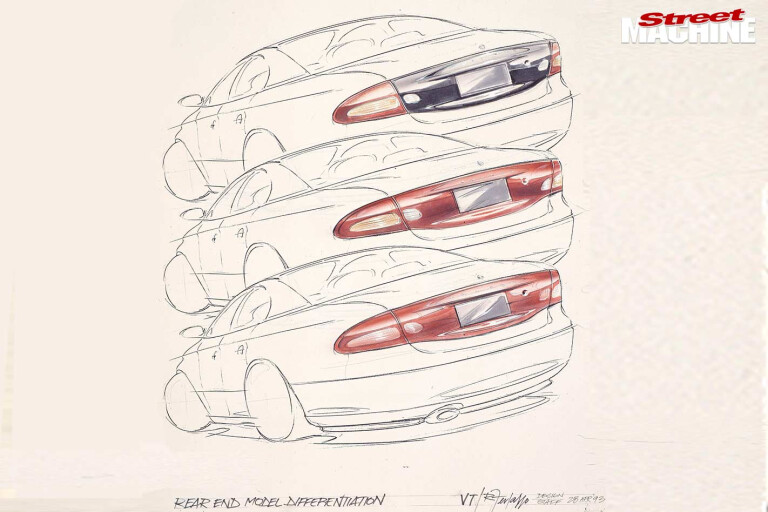
Were it not for the tenacity and passion of Holden workers at all levels, the next-generation VN may well also have been an all-too-narrow Opel Omega. Although an international mish-mash – a widened Aussie body over an updated VL chassis with German doors and an American engine – the VN was a uniquely Australian combination and a roaring success. It begat a long-wheelbase luxury series, reintroduced the ute, spawned three subsequent updates, and even a Toyota. More importantly, though, it put Holden back on the top of the sales charts.
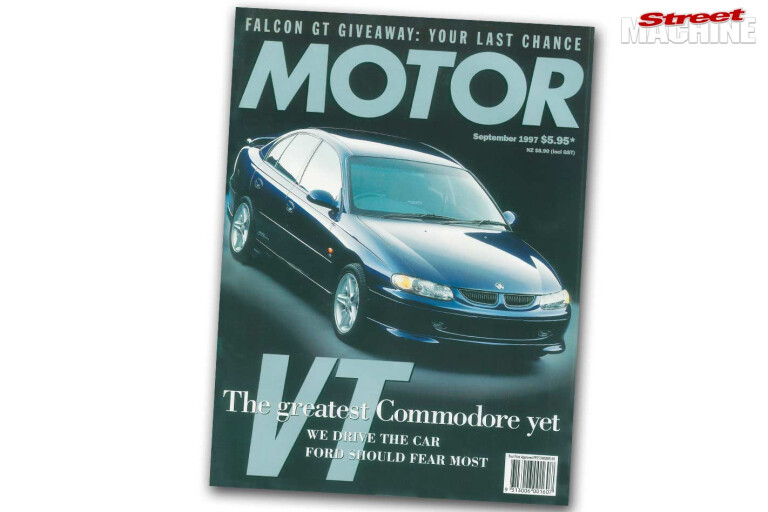
Yet despite these successes, funding for an all-new third-generation Commodore was far from guaranteed. Again, there was an Opel that could almost do the job, and again, it was up to the Aussies to prove that ‘almost’ wasn’t good enough. Read on.
VT COMMODORE
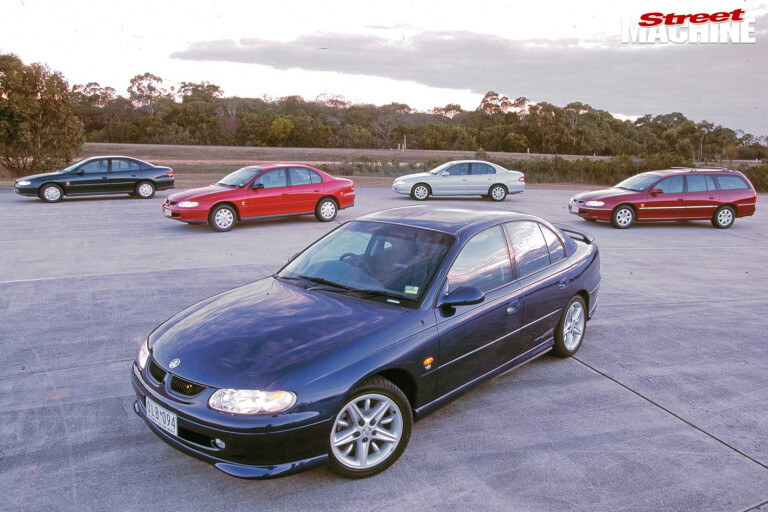
Compared to the tumultuous tenure of outgoing chief Chuck Chapman, John Bagshaw’s stint at the helm of Holden was brief yet measured. Having been Holden’s director of sales from 1966 to 1978, a golden time of muscle cars and market success, his return to the fold in late 1987 was welcomed with enthusiasm. Holden was back on top of the sales charts, and his appointment was seen as a chance for stability, to forge forward off the size of the big VN Commodore.

Following Bagshaw’s retirement in 1990, deputy managing director Bill Hamel was next to fill the top office. Although hailing from America’s Midwest, Hamel had been Holden’s director of manufacturing from 1976 to 1980, so he knew Holden was an Aussie brand that needed to make Aussie cars. Even so, it was hard for the new MD to deflect pressure from GM to use the GM2800 platform for the next Commodore. Destined to become the Opel Omega B, the GM2800 promised to be a bigger car than its predecessor, but in a story all too familiar, it was just not big enough for the Aussie market.

Managing director (1990-1997) Bill Hamel was able to lobby Detroit to make the VT an all-Aussie affair
Holden’s team needed 1520mm of rear shoulder room to ensure the next Commodore remained competitive against Ford’s Falcon.
Hamel had banked enough cash to fund an independent Commodore project, yet still had to lobby GM HQ for the right to build it. Between 1990 and 1993, four international reviews conspired to bring the VT unstuck; that magic number of 1520mm pushed every aspect of the VT outwards, including the cost. But at the final review, approval was granted to change the rear door openings, and with that, the last vestige of the Omega B was eradicated; Holden was building its own car.

Underneath, engineers avoided the pitfalls that affected the VN, which suffered from a carry-over front end no wider than that of the outgoing VL. Instead, the VT received a comprehensive suspension upgrade, including a 78mm increase in front track width over the GM2800 to match the wider body. Steering geometry was revised, redesigned to work with power assistance from the outset rather than the compromised system used on all previous models.
At the back, Holden’s IRS system was fitted across the range, including under the wagon for the first time, with a full 92mm rear track-width increase over the Opel platform to ensure the wheels sat nicely in the guards. Braking received the first major upgrade since the first Commodore, with larger, thicker rotors all ’round, bigger calipers and a larger master cylinder.
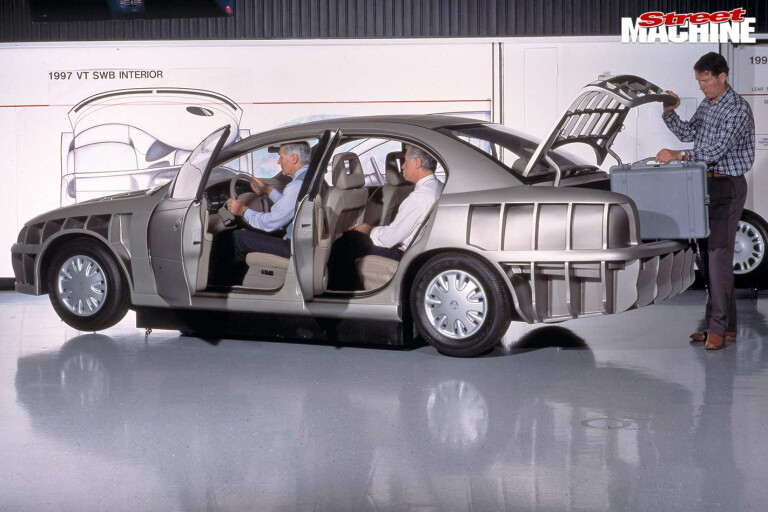
Should those larger brakes not succeed, Laurie Sparke and 17 engineers at Holden’s Advanced Engineering Department developed a new crash structure for the VT that absorbed and deflected impacts with greater efficiency than previous Holdens. Furthermore, the powertrain module was programmed to cut the engine and fuel pump in the event of a crash, while the body computer knew to unlock the doors and activate the interior lights if the seatbelt pre-tensioners or airbags were triggered.
Holden’s Buick-sourced Ecotec V6 carried over from the VS with minor changes to the exhaust manifolds and fuel injectors. Still rated at 147kW, it had enough shove to shift the weighty VT, which came in at 150kg heavier than the base Omega B and a hefty 166kg more than the outgoing VS.
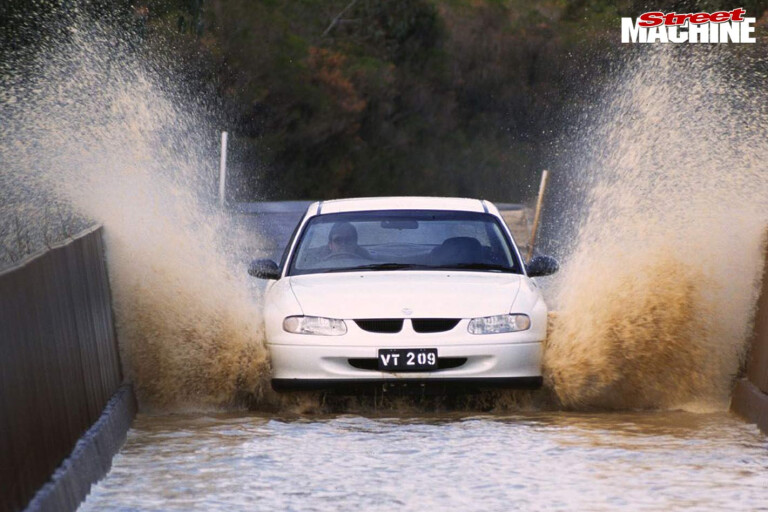
Speculation throughout the mid-1990s that the venerable Holden V8 would be killed off for the VT was well-founded, but the plan to fit GM’s 5.7-litre ‘Gen III’ LS1 V8 did not align with the car’s projected launch date. Instead, the Aussie 5.0-litre was given a stay of execution via a chump-change $2 million upgrade. A compression increase, lighter pistons, thinner rings, trick hydraulic lifters and a new EFI system ensured the V8 complied with incoming ADR 37/01 emissions requirements, as well as keeping ahead of the supercharged V6 at the drag strip.
Backing up the three launch engines and later LS1 was GM’s US-sourced 4L65E four-speed slushbox, while self-shifters got a Getrag five-speed replacing the old BorgWarner T5. For the 5.7-litre Gen III, the chunky BorgWarner T56 got the nod – the first six-speed manual to be fitted to volume-selling Holdens.
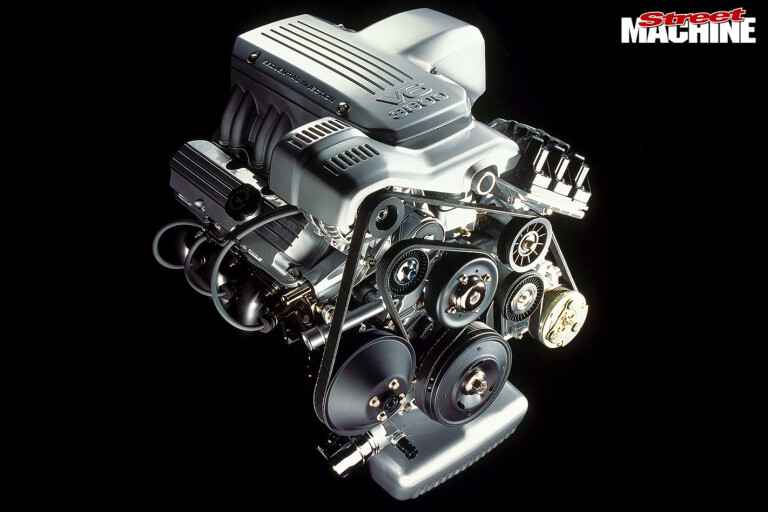
Drivetrains aside, only a handful of interior components – under-dash HVAC parts, electric mirror switchgear and blinker stalks – carried over from the VS Commodore.
Holden invested deeply in the VT; $275 million went to upgrading the Elizabeth plant alone, including 130 new robots. Computer-controlled jigs automatically adjusted size and shape after scanning a car’s ID tag, allowing the VT sedan and wagon, VS ute and Statesman/Caprice to be built on the same line at the same time.
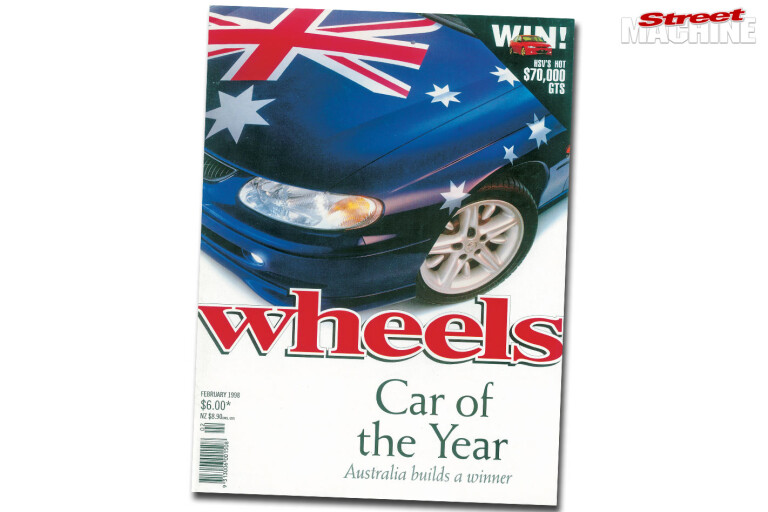
The VT Commodore won Wheels COTY for 1997, edging out the Porsche Boxter seven votes to four, followed by the Lexus GS300, Mercedes-Benz CLK and Mercedes SLK
The VB Commodore was a compromise; although Opel in origin, Aussie engineers worked to ensure the new Holden could survive in our country. The second-gen VN Commodore shared doors with Opel, but was wider and stronger than the European offering; more importantly, it put Holden in good stead for the all-Australian VT development. When the third-gen VT Commodore was finally released, 19 years after the original hit the streets, it bagged the Wheels Car Of The Year award for 1997 and sparked a renaissance within Holden. For the next decade, Holden would dominate local motorshows with an array of dazzling concept cars, apply various bodystyles to the VT platform – including the new Monaro coupe and the return of the One Tonner – and introduce a robust export scheme.
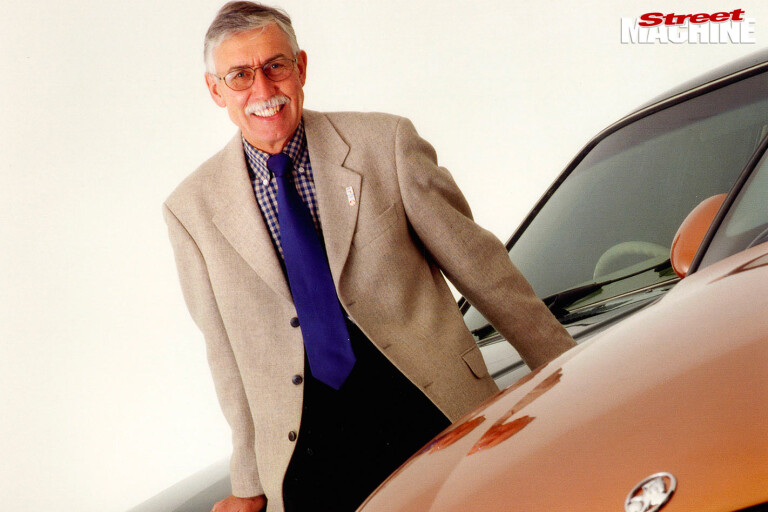
Peter Hanenberger (MD 1999-2003) oversaw one of the most exciting and dynamic periods in Holden's history
Powered by a combination of Aussie and Detroit iron, it shared styling cues with its German cousin, but only the black plastic B-pillar garnish and four interior grab handles were interchangeable with the Opel. The VT Commodore was about as Australian as they get – until they designed VE.
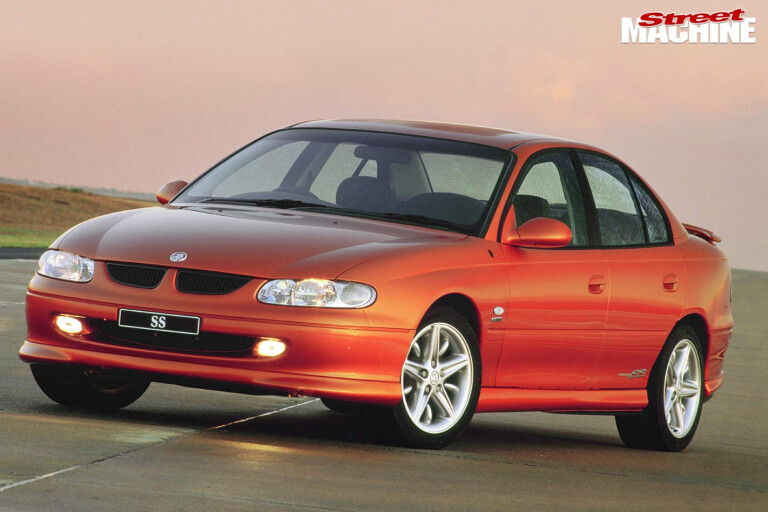
THE FACTS: VT COMMODORE
- Shared six parts with the Opel Omega: two black plastic B-pillar garnishes and four interior grab handles
- Drivelines aside, the VT owed little to the previous-gen Commodore, although blinker stalks and mirror adjusters were carried over
- Developed as a right-hand-drive sedan, wagon and ute, the platform’s success saw it engineered for left-hand drive as well as long-wheelbase sedan, coupe, cab-chassis
and dual-cab ute - All-wheel drive became available on wagon, cab-chassis, dual-cab ute and coupe
- Easily the most successful Holden chassis ever
- Exported to the USA, North America, South America, Middle East, Asia and United Kingdom
- Other names considered: None this time; Commodore was KING!
MONARO
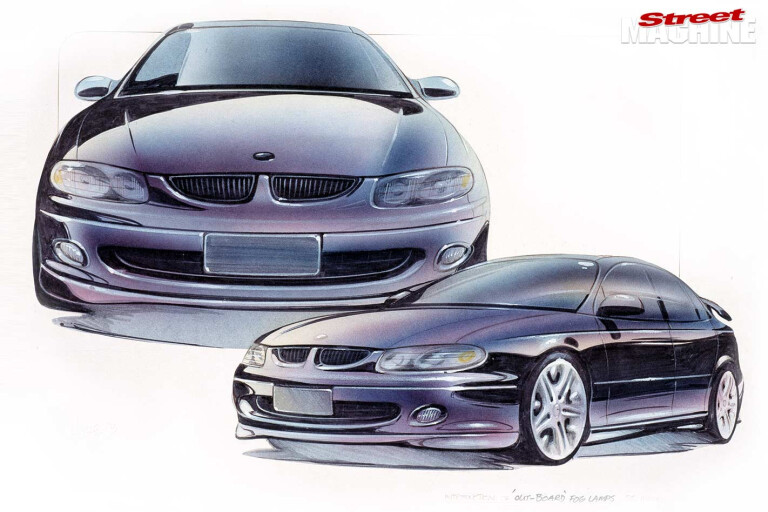
The rebirth of the new Holden coupe for the 21st century started with a line drawing on Mike Simcoe’s lounge-room wall and finished with exports to the UK, South Africa, Middle East and USA. Simcoe envisioned a sophisticated, executive man’s personal coupe, but when the covers were lifted off the VT Commodore Coupe at the 1998 Australian International Motor Show, the crowd bayed for the iconic Monaro name to return.
The new Monaro’s gestation was remarkably short: just 22 months and $60 million got the coupe launched in 2001. Dubbed ‘V2’, it ran VX specs and was available as a supercharged V6 and Gen III V8. HSV versions followed, as did exports and motorsport success. Sexy in shape and seductive in performance, for some it was the ultimate expression of the Commodore platform, repeating the history of its Kingswood-born ancestors.

As much as GM’s Bob Lutz wanted the Monaro in the USA, budget ruled out any sheet metal changes. Working with Pontiac, future Holden design boss Richard Ferlazzo created the divisive GTO nose and integrated the required NHTSA ‘zero-damage’ crash safety standards found only in the USA.
Minor changes to the rear structure necessitated by US laws meant the fuel tank was moved from under the boot floor to behind the rear seat, robbing boot space. But at the 2004 launch, the GTO was lauded for the performance of the LS1, turning in a 5.3sec 0-60mph time and 13.8sec quarter. For the 2006 model, Holden fitted the 6.0-litre LS2, giving the big coupe even sharper performance. Over 40,000 Monaros found a home on the other side of the Pacific over the course of three years, a direct consequence of
the success of the VT platform.
DID YOU KNOW?

- Holden established an Opel product engineering department to cater to the local fine-tuning of the Barina, Astra and Vectra. Based at Fishermans Bend and headed by Ray Borrett, the department’s workload increased significantly when it was announced the Vectra would be built alongside the VT Commodore from 1998. Holden had big plans for the Vectra, both for the local market and Australasian exports, and also as a possible replacement for the Chevrolet Opala range built by General Motors do Brasil. Ultimately, the Asian economic crisis kyboshed this, but the creation of a second line at Elizabeth did not go to waste; the locally built Vectra bowed out in 2001 just in time for the new Monaro.
- Unlike the Aussie Commodore’s hairy-chested V6s and V8s, Opel’s Omega range made do with a series of four-bangers and V6s, the biggest being a 24-valve 3.2-litre. Diesels were also available, including turbo straight-sixes sourced from BMW. The previous-generation Omega/Carlton included a Lotus-tuned version, which, upon release was one of the fastest sedans in the world, but the Omega B was without a hero car. One LS1-powered prototype was constructed, but the project did not go ahead.
- The design team workshopped three different directions for the VT, using then-cutting-edge tech to conduct market research without resorting to expensive clay models. Overlaying computer-generated images onto real-world street scenes is high-school stuff these days, but in the early 1990s it was mind-blowing. Three such digital concepts were shown to research groups in June 1992: a reskinned VR/VS; the GM2800 project; and an entirely new design, created by Mike Simcoe’s (pictured, above) team under director of design Phil Zmood. Polls were strong for the GM2800 and stronger for the local design, but resoundingly negative for the VR/VS update. The crowd had spoken. There was just the matter of cost; the most popular option was also the most expensive.
VT/VZ-BASED CONCEPT CARS

•1994 Buick XP2000
•1998 Holden VT Commodore Coupe
•2000 Holden Sandman
•2000 Holden ECommodore
•2001 Holden UTEster
•2001 HSV Maloo HRT Edition
•2002 HRT 427
•2002 Holden SSX
•2002 Holden Cross 8
•2003 HSV Maloo One Tonner
•2004 Holden Monaro Convertible
•2004 HSV GTS-R
•2004 Holden SST
WH STATESMAN/CAPRICE
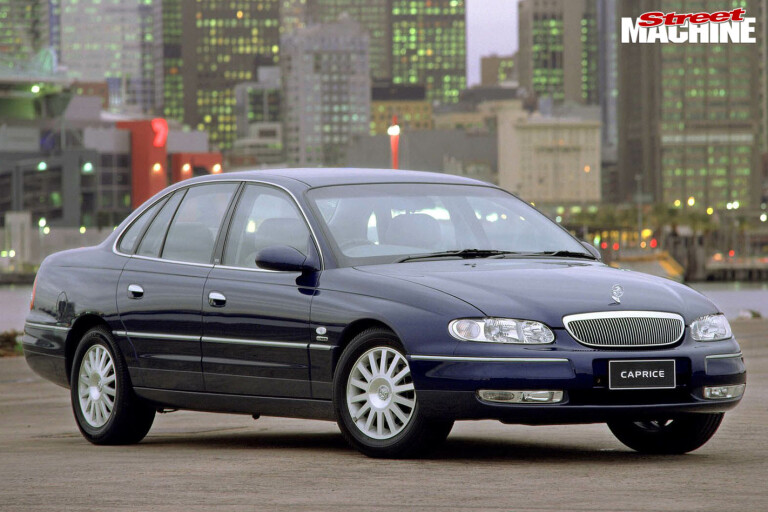
Despite the heavy investment in the VT, including a long-wheelbase wagon, the VT-based WH Statesman and Caprice twins were not a sure thing. The early 1990s saw Holden selling around 200 units per month of the VQ, which heralded the company’s return to the long-wheelbase market, but it wasn’t enough to justify continuing the model. Bill Hamel set a target; with the March 1994 release of the VR Statesman/Caprice, Holden had to shift around 400 units per month or a big, new VT-based limo was off the cards. Fortunately, the VR’s American-inspired styling struck a chord with private buyers and hire car fleets alike; it sold around 500 units per month before being replaced with the same-but-different VS model.

Hamel approved the VT-based WH in late 1994 for release in June 1999, with the new LS1 optional on the Stato and standard on the Caprice. The WH Series II copped the relevant VXII upgrades in August 2001 and the model saw two further updates, WK and WL, in line with VY and VZ Commodore releases. The line proved so popular in both Australia and overseas that when the all-new VE Commodore was introduced in July 2006, there was no delay in the long-wheelbase version; the new-gen WM was released alongside the Commodore, with development of a replacement wagon taking a back seat.
SPECIAL EDITIONS:
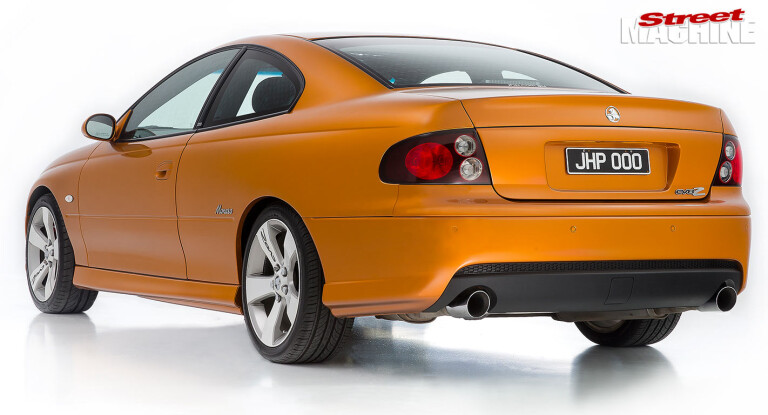
• Commodore 50th Anniversary sedan and wagon (VT)
• Commodore Olympic Edition sedan and wagon (VT)
• Commodore Equipe sedan and wagon (VT, VX, VY, VZ)
• Commodore Lumina sedan and wagon (VX, VY, VZ)
• Commodore 25th Anniversary sedan and wagon (VY)
• Commodore SS wagon (VY)
• Commodore SS-Z sedan (VZ)
• Commodore SVZ sedan, wagon and ute (VZ)
• Storm ute (VU, VY, VZ)
• Crewman Storm dual-cab (VZ)
• Thunder S ute (VZ)
• Thunder SS ute (VZ)
• Crewman Thunder SS dual-cab (VZ)
• Crewman SS-Z dual-cab (VZ)
• Monaro CV8-Z coupe (VZ)
• SS Fifty ute (VU)
• Berlina International wagon (VY)
• Calais 50th Anniversary sedan (VT)
• Calais International sedan (VT, VX)
• Statesman International (WH, WL)
VTII & VX COMMODORE, VU UTE
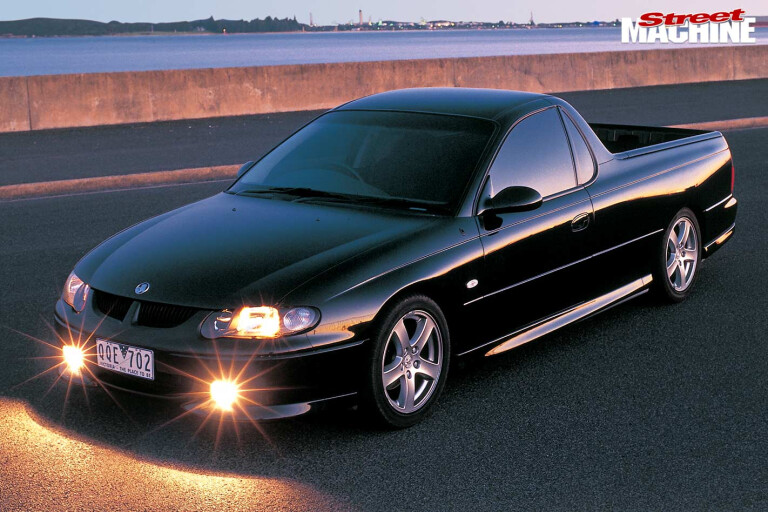
The VT’s first minor update was the VTII announced in June 1999. Blinkers went to white lenses across the range and some of the wheel covers were revised, but who cares? The big news was the new LS1 V8. The ‘Gen III’ – in Holden-speak – debuted with the famous ‘Ninja Turtle’ engine cover appearing in HSVs first, then across the rest of the range in the third quarter of the year.
The last pair of heads were screwed onto the final Holden 304 in June 1999, over 30 years and half-a-million units since its introduction. HSV saw off the five-litre with the 195kW VSIII Maloo.
Less weight from the new all-alloy V8 meant revisions to the front suspension, but best of all the 5.7-litre LS1 was available on any model, right down to the povo Exec. The cops loved ’em.
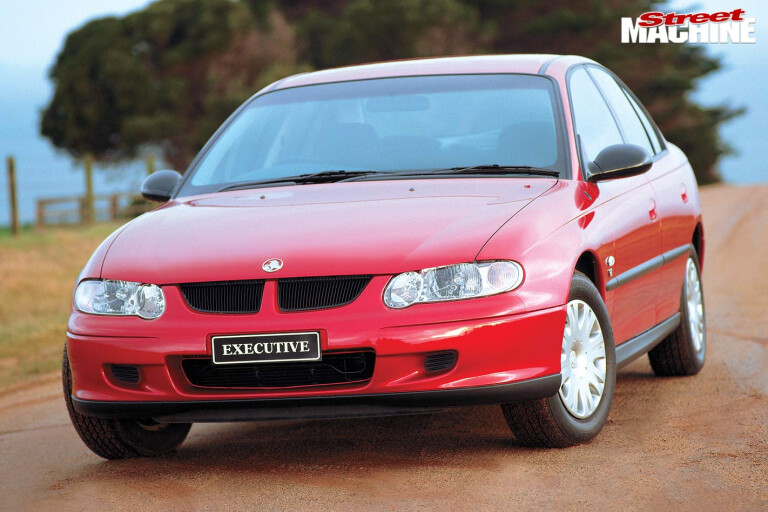
The VTII was followed by the VX series of August 2000, still sporting Omega B-inspired sheet metal, but barely. Berlina and Calais featured a different headlight shape and rear valance to the lesser specs, while a new spec level, Acclaim, was introduced for the safety-conscious family man. Although Holden toyed with fitting a 3.8-litre Isuzu V6 to the new model, drivelines carried over from the VT.
The VS ute soldiered on, selling alongside the VT and VX until replaced by the VU in December 2001. A VX in all but model designation, the VU heralded a new direction for the local load-lugger. As buyers looking for a straight tradie vehicle dwindled in favour of cheap dual-cabs, Holden rebranded the ute as a lifestyle vehicle, placing heavy emphasis on the LS1-powered SS and ensuring the tub could swallow a motorbike whole. These were not priorities when Opel designed the Omega B!
EXPORTS
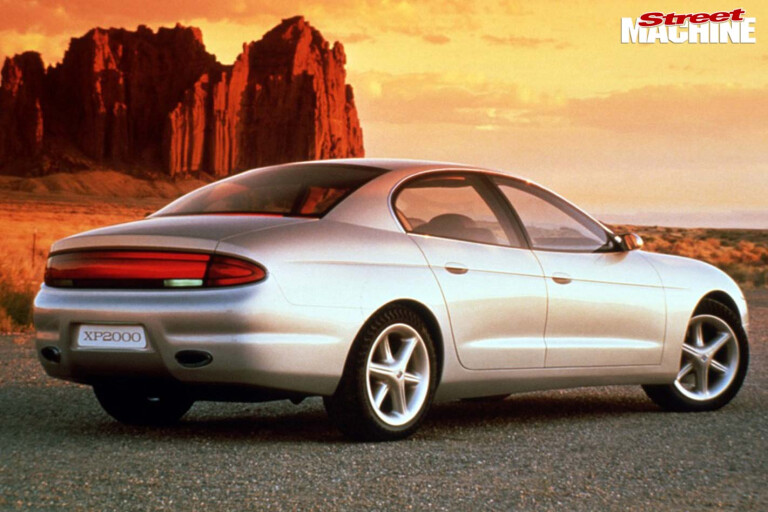
Major interest from Buick saw Holden engineer the VT Commodore for left-hand-drive, the first such undertaking since the LH Torana. Seen as a replacement for the Century, plans for Project GMX127 called for 45,000 CKD kits per year to be exported to the USA. Wagons would be sent over completely built up, with numbers projected at around 16,000 per year. The arrangement was to last until at least 2004, and at around $3 billion it would be Australia’s largest export deal.
The Yanks even designed a concept car; the XP2000 (top right) was built in Australia straight off LHD VT architecture, albeit running an experimental 3.5-litre quad-cam V8. The concept was shown to enthusiastic Buick dealers at a convention in late 1994, but by then the GMX127 program had already been cancelled, a victim of US unions and GM’s need to streamline operations.
Futhermore, Opel had brokered a separate deal to export its Omega as the Cadillac Catera, which fed into a separate arrangement whereby Buick would also get the Opel, but only if it could be built in Kentucky and fitted with the 3.8-litre V6. Opel would not concede and that deal too went south.

Holden’s GMX127 project was not in vain, though; a tiny article in Wheels March 1997 revealed a ‘secret deal’ to send 10,000 VT Commodores per year to the Middle East. Big news, although Toyota were already sending 25,000 Camrys there annually! As a direct consequence of Buick’s brief flirtation with Holden, Middle Eastern markets received the VT, VX, VY and VZ badged as the Chevrolet Lumina, with variations ranging from base-model sedans to Monaro-sourced V8 Lumina coupes.
Brazil also received Aussie Holdens, this time as the Chevrolet Omega, sold from 1999 as a direct replacement for the locally built Opel-based Omega.
Vauxhall boosted its usually staid image with imports of the big Commodore coupe from 2004 (right). Retaining the Monaro name, these were initially available with the LS1 before the switch to LS2 in 2005. For 2006, the Vauxhall copped a factory-endorsed Harrop blower and 373kW, providing supercar performance for fish-and-chip money. About 800 Vauxhall Monaros found a home in the UK; Top Gear presenter Jeremy Clarkson famously cricked his back spending the day doing burnouts in one.
VY & VZ COMMODORE
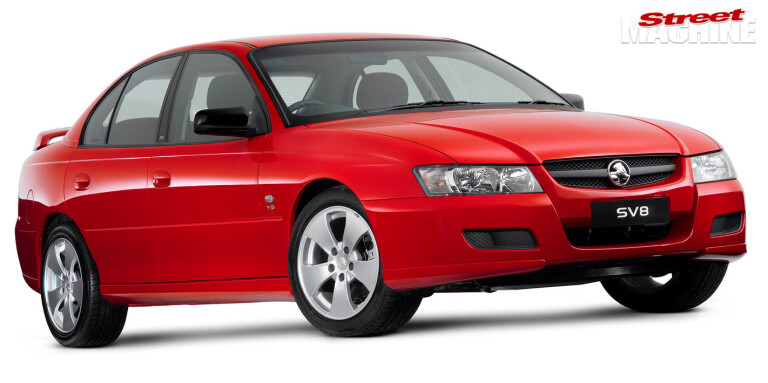
By late 2002, the VX was on track to beat Holden’s all-time sales record set in 1973, and commanded nearly 50 per cent of the Aussie large car segment.
Enter the VY series of September 2002, sporting fresh new sheet metal front and rear. Initial feelings that the sharp-edged look was at odds with the carry-over VT doors’ softer styling dissipated when the car sold like gangbusters, and the VY has arguably aged well.

Designed to fight the Thai-built dual-cabs that were eating ute sales, the Crewman combined WK Stato-based rear glass and inner door guts, a sedan-style floor and separate rear chassis connected by strengthening pillars behind the rear seat
Mike Simcoe’s design team was kept busy both outside and in; the VY included a major dashboard redesign featuring a Euro-style central stack, with varying build materials used to differentiate between spec levels. The modern, symmetrical design also better leant itself to both right- and left-hand-drive applications.
Mechanically, much of the componentry carried over from the VX. A larger sump for the V6 and 10 more kilowatts for the LS1 were the most notable changes. An update to the Statesman and Caprice ranges followed in May 2003 as the WK series.
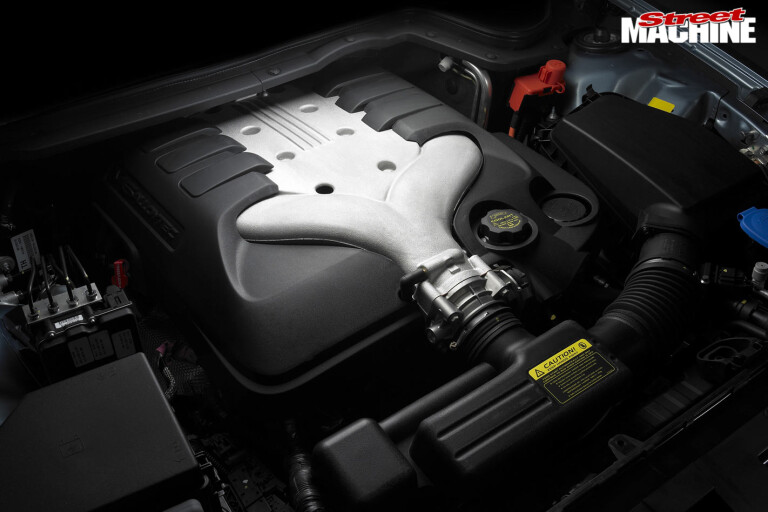
History hasn’t been kind to the Alloytec V6 fitted from the VZ on. It didn’t have the torque of the Ecotec, and as the engines aged, they’ve tended to stretch timing chains and generally be a bit shit
The success of the VT and VX Commodore had raised a few eyebrows within GM, most notably those of Bob Lutz, then vice-chairman of product development. By February 2002, he had proclaimed Holden to be GM’s “centre of excellence for rear-wheel-drive architecture”, marvelling at how the Aussies could create so much, so quickly for such relatively small investments.
His confidence in the brand saw an invigorated Holden create multiple products across several niches, including the reintroduction of the One Tonner cab-chassis and the Crewman, Holden’s first locally built dual-cab ute. Lutz also championed the new Monaro’s export to the USA as the Pontiac GTO. Concept cars came thick and fast – some fanciful, others an insight into Holden’s immediate future.
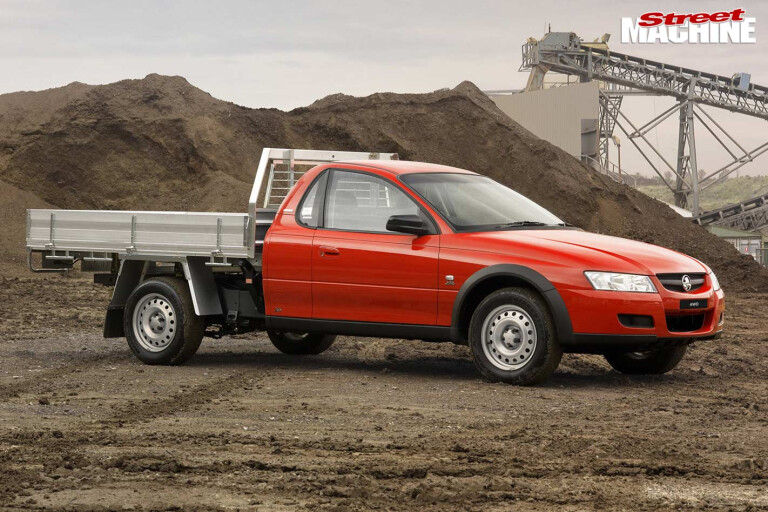
Many tradies had never forgiven Holden for killing off the WB One-Tonner back in 1984, so when the mighty Tonner returned in 2003, it was like the Second Coming. The base model and S ran the V6, although either was available with the V8. VZ updates allowed for the super-rare AWD Cross 6 (above), but just three years after its release, the Tonner was gone again
The VY model also introduced all-wheel drive, albeit in V8 form only. Following the SSX concept, AWD running gear was fitted to the wagon as the Adventra, then the Crewman Cross 8, as well as the Avalanche and Avalanche XUV derivatives from HSV.
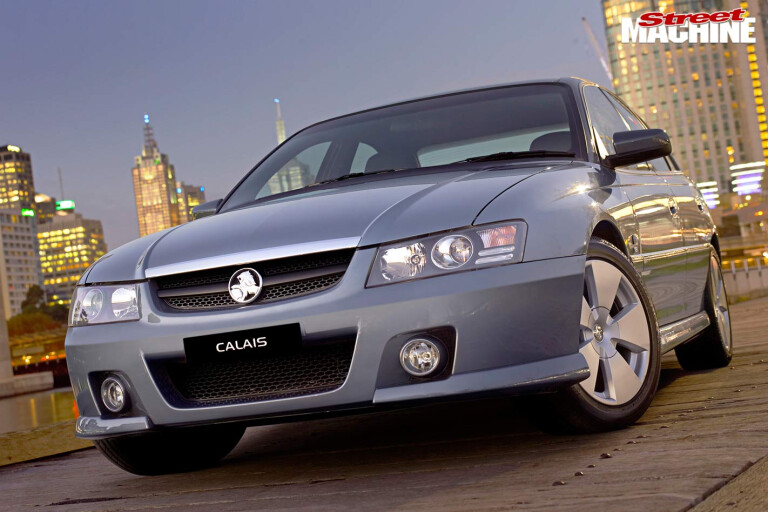
Visually, the VZ upgrade of August 2004 (the final iteration of the third-gen Commodore) appeared minor, but under the skin sat Holden’s first all-new V6 engine since 1988. Developed by GM Powertrain for use in a range of applications, the 3.6-litre Alloytec V6 was expected to be a revelation after the inherent gruffness of the outgoing, 90-degree Ecotec. Backed by either the 4L60E four-speeder, a French-manufactured 5L40E five-speed, or an Aisin six-speed manual, the new V6 was quoted as making 175kW, with a 190kW version reserved for sports and up-spec models.

With the Ecotec due to exit, Holden did not offer a V6 AWD combination until the new engine came on-line with the VZ, expanding the all-paw range to include V6 Adventras, V6 Crewmans and a rare V6 AWD Tonner.
HSV started installing the mighty 6.0-litre LS2 across their RWD VZ range, with the AWD Coupe 4 and Avalanche twins retaining the LS1. Marketing skipped the Series II moniker for the VZ, instead dubbing the model’s mid-life upgrade MY06. Their hand was forced; ADR 79/01 required Euro 3 emissions compliance on the Holden range by 1 January 2006 and the LS1 wasn’t compatible. V8-powered AWD models were shown the door and the L76/LS2 made optional on Berlina and Calais and standard on the SS.
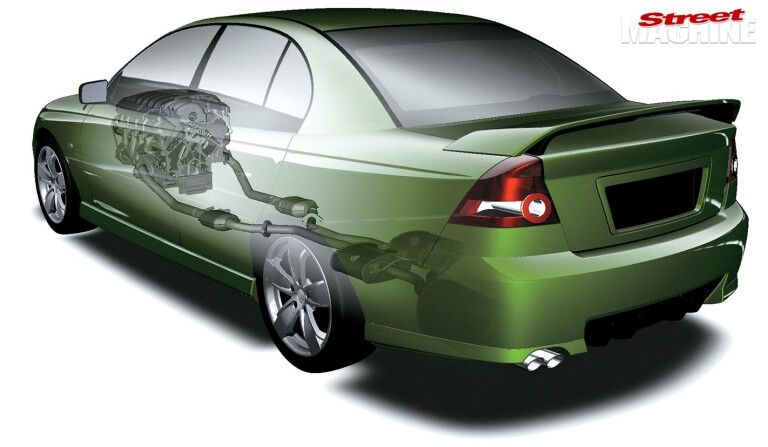
The VT, VX, VY and VZ cemented Holden’s position as Australia’s most popular car manufacturer. The brand saw huge change, an increase in cashflow, more resources and finally some positive attention from the GM gods. Holden expanded into new or long-dormant bodystyles, and enjoyed an export programme unlike anything since the 70s. The Opel Omega did not share the Commodore’s success; transmission failures and oil consumption plagued the Euro car and also found their way into the Cadillac versions sold in the US. The Omega was shuffled off in 2003 with no replacement.
Conversely, by the time the all-new, Australian-designed VE Commodore appeared in 2006, it shared nothing with the Opel brand.

It may have taken the Commodore 28 years to get completely clear of Opel’s shadow, but as you’ve read over the past three features, no Commodore, from the first to the last, was ever merely a locally assembled Opel. Hundreds of Aussies working hundreds of different jobs saw to that, from design, engineering and manufacturing, ensuring that the Commodore became one of our own. Hell, it was ours from day one.

COMMENTS